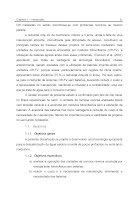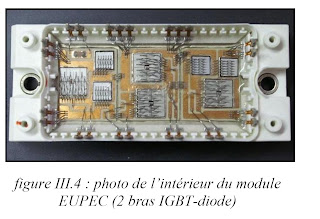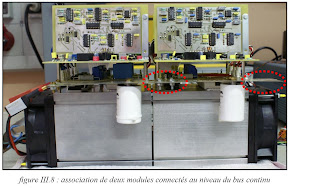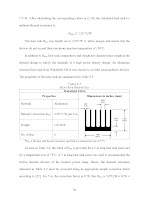ABSTRACT
Abstract of dissertation presented at Universidade Federal do Ceará as partial of
fulfillment of the requirements for the Master degree in Electrical Engineering.
DC-AC CONVERTER FOR STANDALONE POWER SYSTEM
The study and development of new topologies or combinations of these in order to
apply for autonomous systems of electric power supply are the main drivers of this work. The
project consists of the combination of two converters, one high-gain step-up converter based
on the three states switching cell whose role is to raise the battery voltage to a value of
400Vcc, thus forming a DC bus, and a single-phase inverter bridge-type with a LC filter,
using the bipolar modulation type to obtain sinusoidal voltage similar to the power grid. The
control of the high-gain converter is performed through a loop of current and voltage, both
analog, but some part of the voltage loop is performed internally in a dsPIC, and inverter
control is largely accomplished through this dsPIC (Digital modulator and controller), using
the principles of discrete control. This system is capable of converting from 48V DC batteries
in 220Vac and 60 Hz, with performance equal to or greater than 85% with a wide range of
loading. Each stage has its theoretical study developed, and the introduction of a methodology
for obtaining a reduced model of the high gain converter, and at the end, after the
specifications and sizes are shown the experimental results of the prototype developed. The
system was tested in various situations that can be found in everyday life, like starting a nonlinear load, for example.
Engo .LUIZ DANIEL S. BEZERRA
CONVERSOR DE ALTO GANHO ASSOCIADO A UM INVERSOR
PARA APLICAÇÃO EM SISTEMA AUTÔNOMO DE ENERGIA
ELÉTRICA
Dissertação submetida à Universidade Federal
do Ceará como parte dos requisitos para
obtenção do grau de Mestre em Engenharia
Elétrica.
Orientador: Prof. Dr. René Pastor Torrico Bascopé.
Fortaleza Julho 2009





















































 JOSIL ARTISTA PLASTICO FORTALEZA CEARA BRASIL AV.HERACLITO GRAÇA 41 TEL(85)32542378
JOSIL ARTISTA PLASTICO FORTALEZA CEARA BRASIL AV.HERACLITO GRAÇA 41 TEL(85)32542378
















